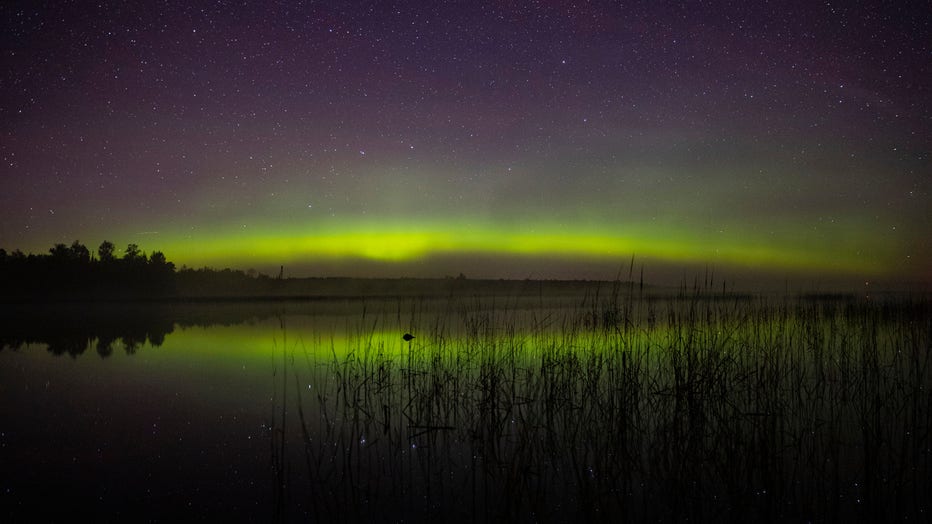Dazzling auroras could be on display from Seattle to Boston Tuesday during geomagnetic storm watch
The Sun's active cycle continues as a geomagnetic storm may produce aurora lights early this week further away from the poles from Seattle to Boston.
NOAA's Space Weather Prediction Center (SWPC) in Boulder, Colorado, issued a G2 (Moderate) Geomagnetic Storm Watch on a 5-level scale for Tuesday.
The SWPC said a coronal mass ejection, or CME, was observed on Sept. 14, and the Earth-directed component from the CME is likely to arrive early on Tuesday. According to NASA's Solar Dynamics Observatory, the Sun produced 9 M-class flares, 22 coronal mass ejections and one geomagnetic storm this past week.
For most people, a Geomagnetic Storm Watch is not something to be concerned about. The watches help government agencies, power providers, telecommunication companies and satellite operators prepare to protect systems impacted by space weather.
Geomagnetic storms can produce stronger aurora borealis lights or Northern Lights, which normally occur at the poles, but space weather can cause the lights to expand into the northern edge of the U.S.
The effects from this geomagnetic storm, including aurora lights, will happen late Monday night and into Tuesday morning.

The aurora borealis could be seen on the North horizon in the night sky over Wolf Lake in the Cloquet State Forest in Minnesota. The KP index was high in the early morning hours of Saturday September 28, 2019 which meant the aurora borealis aka "the
THE DAY THE NORTHERN LIGHTS COVERED THE PLANET: HISTORY OF EARTH'S GREATEST SOLAR STORMS
The aurora forecast from the University of Alaska Fairbanks Geophysical Institute predicts highly active auroral displays overhead in Alaska and Canada. Auroras will likely be visible low on the horizon for the U.S. Northern Tier, including in Seattle, Great Falls, Des Moines, Minneapolis, Chicago and Boston.
Those with cloud-free skies will also have a better chance to see the dancing lights. The best time to view the aurora is between 10 p.m. and 2 a.m., according to the SWPC.
Another thing that helps to see the aurora lights is a recent new Moon. With the mid-September new Moon, there is a better chance to see the aurora lights. Moonlight and city lights can wash out the Northern Lights when they might be visible in the northern U.S.
If weather conditions don't prove favorable to see the lights on Tuesday, there will be more opportunities in the coming months. The Sun is in the midst of an active period in its solar cycle, which lasts 11 years.

